Learning organization
Table of Contents
Learning is paramount to business success.
Technology marches on—market conditions and consumer demands change.
Organizations that aren’t agile and are not learning simply won’t cut it.
Everyone wants to be a learning organization.
These are the companies that put learning first by turning their organizations into learning environments where they encourage experimentation.
Is your organization a learning organization? How do you know?
Our guide has the answers.
We’ll break down all your burning questions, including:
- What is a learning organization?
- What are the five main traits of a successful learning organization?
- How can your company become a learning organization?
Now let’s get ready to learn!
What is a learning organization?
A learning organization is one that prioritizes creating, acquiring, and transferring knowledge and adapts its behavior to reflect new information and insights.
That is one possible definition of a learning organization, a term that American systems scientist Peter Senge first brought to the fore.
In his 1990 book, “The Fifth Discipline: The Art and Practice of the Learning Organization,” he described learning organizations as places where people “continually expand their capacity to create the results they truly desire, where new and expansive patterns of thinking are nurtured, where collective aspiration is set free, and where people are continually learning how to learn together.”
In short, a learning organization or a learning company invests heavily in training but also in fostering a true learning culture of transparency, communication, and experimentation.
Most importantly, it then applies all that knowledge to itself and its internal processes.
Up next, we dive into the five main characteristics of a learning organization.
Five traits of learning organizations
Like most terms in organizational science, learning organization can seem a bit academic and hard to understand.
You’re not alone!
But don’t fret, it’s actually pretty straightforward. Let’s start by looking at five key learning organization traits so you can identify where your company stands and where it needs to go.
So, here’s what learning organizations look like.
1. Collaborative learning culture (systems thinking)
In his influential book, Peter Senge named systems thinking as the most important pillar of a learning organization.
But what exactly does that mean?
In brief, systems thinking is about recognizing that interconnected smaller parts make up an organization. Every team member connects to every other team member—all working toward a common goal.
Systems thinking sees organizational structure not as a set of separate silos but as interconnected components.
So, to understand your organization as a whole means to understand each of its parts and how they affect each other.
Doing this helps organizations identify barriers to change, strengthen and build connections, and eventually create a good learning environment.
Collaborative approaches to learning thrive when employers respect different viewpoints and encourage discussion and debate.
An excellent way to achieve this is through the use of social learning features in Learning Management Systems (LMSs).
The most important takeaway from systems thinking is that company culture and decision-making have to give up the silo model and embrace teamwork and connectedness.
Technology, company policies, and learning processes interconnect. Learning organizations understand that their approach to knowledge management has to be total and all-encompassing.
Learning isn’t something that should only happen during onboarding and designated training. Instead, companies should identify and seize all learning opportunities.
2. Lifelong learning mindset (personal mastery)
Personal mastery is the development of the ability to achieve personal goals.
Senge called it the “cornerstone of a learning organization”, and it’s clear to see why.
No learning culture could ever function if it didn’t have learners ready to learn.
So, how can organizations enable team members to achieve a lifelong learning mindset? By fostering an environment that encourages them to reflect and develop their personal vision.
This means giving people in your company the means to become masters of their domain through continuous learning and opportunities to hone their skills.
However, there’s an important caveat to this. Employees need to be able to apply all of their knowledge and skill to actual real-world situations. The idea is to empower employees to be good at problem-solving.
Bombarding employees with new information like they’re cramming for a test is not a good use of human resources.
This is where data-driven LMSs, such as Docebo, can be really useful. They can help you leverage learning analytics to deliver real insight into individual learning and guide your learner’s decision-making process.
3. Leave room for innovation and reflection (mental models)
A mental model is a framework for thinking and decision-making.
An example of a mental model is the Feynman Technique (developed by the famous physicist). Students had to explain a concept they had been studying for a while as if they were relaying it to someone who knew nothing about it.
Thinking about the mental models we adopt can help us understand how our ingrained assumptions, generalizations, and biases affect our decisions and interactions with others.
A learning organization leaves room for reflection on these mental models. It’s a great way to break through the status quo, drive new initiatives, and empower creative thinking.
When people are free to reflect, they can identify barriers to progress. They can recognize the bad parts instead of taking them for granted. This can lead to various innovations, whether they’re new products or new learning opportunities.
Using dialogue instead of commanding from above without context means that the vision of company leaders can become the personal vision of all team members. In turn, it becomes the shared vision of the entire company.
As Senge concludes, it’s essential to identify and challenge mental models beyond unfavorable behaviors and assumptions.
4. Forward-thinking leadership (shared vision)
If an organization doesn’t have forward-thinking leadership, it cannot be a learning organization.
Forward-thinking means that leadership understands that neither a shared vision nor a culture of learning is possible when dictated from above.
For a vision to become shared, the company needs to consider the needs of all team members—including their learning needs.
The best way to do this is to ask them. Talking to managers and employees can uncover knowledge gaps and other barriers to an effective learning culture.
Organizations should not ignore opportunities offered by e-learning platforms and should offer continuous learning through webinars, on-the-job training, and online courses to all.
A shared vision will naturally evolve over time. Managers should share it where everyone has access, discuss it with team members, and change it as new information and perspectives emerge.
Leadership should be open to learning from mistakes (their own and those of others) and having an open discussion on how to avoid them.
An LMS can help centralize all this knowledge for future reference.
5. Boost knowledge sharing (team learning)
Individual learning is important, but it’s not the whole picture.
In any company, people work as a team. So, it makes sense that they should learn as a team too.
Team learning, according to Senge, can happen when team members are “humble” and open to reflection and taking into account the views of others.
In essence, team learning can only happen when all other characteristics of a learning organization are present too.
This is because employees need to feel confident to ask questions and make mistakes.
Most importantly, team learning is not just about having groups of employees participate in training together.
It’s really about dialogue and discussion. Each team member should get the opportunity to contribute and have their voice heard. This way, they can bring their knowledge together and find the solution to an issue as a group.
Modern online learning platforms are great for bringing different team members together. They can easily enable collaborative learning and help your organization make the most of everyone’s input.
The next section covers the steps for building a learning organization.
Four steps to building a learning organization
Being able to join the likes of Apple and General Electric in being a proper learning organization isn’t going to happen overnight.
But adopting the five pillars we’ve just covered will set you on the right track. Once you’ve begun to embrace the five key traits, it’s time to follow our four steps to building a learning organization.
Remember, the end goal is to foster an environment of continuous learning, open communication, and empowerment for risk-taking and experimentation.
Step #1: Invest in corporate training
Learning and development is pivotal if you want to be a learning organization.
To this end, companies need to invest in collective learning and a strong learning culture across all departments.
When you consider the five pillars Senge talks about, it becomes clear that corporate training is necessary.
Luckily, today it is easier than ever to have a robust learning network in your organization.
The days when all learning had to happen in person are long past. And with them the costly hotel conference room fees.
Using an LMS to deliver training, you can take the best of asynchronous and synchronous learning and empower entire teams to learn collectively.
This way, by tapping into the collective knowledge of all departments, you can close knowledge gaps and overcome various organizational challenges.
To enable this on a structural level, some organizations have chosen to enlist a Chief Knowledge Officer (CKO) to manage information throughout the organization.
Step #2: Promote open communication and transparency
Promoting the company’s vision from an ivory tower is old news. It’s simply not effective anymore, and your employees won’t engage or have motivation by having to memorize company mantras from an employee handbook.
Instead, for a learning organization to take off, it needs to promote open communication and transparency.
You should assemble a team from all levels of your organization to identify shared values and build an inclusive and open company culture.
Transparency and open communication are necessary for a shared vision and team learning, reflection, and innovation.
The experimentation and risk-taking that these require can’t happen if people are too afraid to speak out.
Step #3: Embrace constructive feedback
Many companies formalize feedback in a quarterly review or something similar.
While this is a great way to get actionable insights into performance and engagement, a learning organization tries to incorporate continuous constructive feedback in all its business processes.
Everyone should be part of a constant feedback loop. Essentially, it means team members give and solicit feedback from each other about the ideas they have or the actions they’ve taken.
A great example comes from Coca-Cola. On their journey to becoming a learning organization, they realized that formal performance reviews were too constrictive. Team members needed feedback more often.
This focus on development helped drive a learning culture and translated into new ways of working and serving customers.
Step #4: Invest in achieving goals rather than completing tasks
In learning organizations, the point is not to just show up. Organizations that focus just on completing tasks won’t have the competitive advantage to survive in today’s increasingly complex market.
Goal orientation means looking at what you want to accomplish holistically. It’s a way not to miss the forest for the trees.
If what you want to achieve is a learning organization, then your goal should be to eventually have the five traits.
This means it’s not really about choosing an LMS and webinar topics.
It’s about aligning your organization with the goals of continuous learning, honest feedback, and innovation (and choosing tools that facilitate your goals).
In general, learning organizations invest in achieving their overarching goals rather than just completing the immediate tasks in front of them.
Up next, time to recap.
Now over to you
Most companies worth their salt aspire to become a learning organization. Learning organizations are agile, able to adapt quickly to new conditions, and have an engaged, motivated, and growing workforce.
The values of transparency, openness to new ideas, accountability, and feedback are key to transforming your organization.
A powerful LMS can help you achieve your goal of becoming a learning organization. It lets you centralize and easily manage learning processes in your company while enabling collaborative learning.
At the same time, it makes learning accessible to employees at every level of your company, empowering them to take charge of their professional development.
Do you want to delve deeper into the world of organizational learning? Take a look at our glossary for more learning insights and resources.
Thanks for reading!








